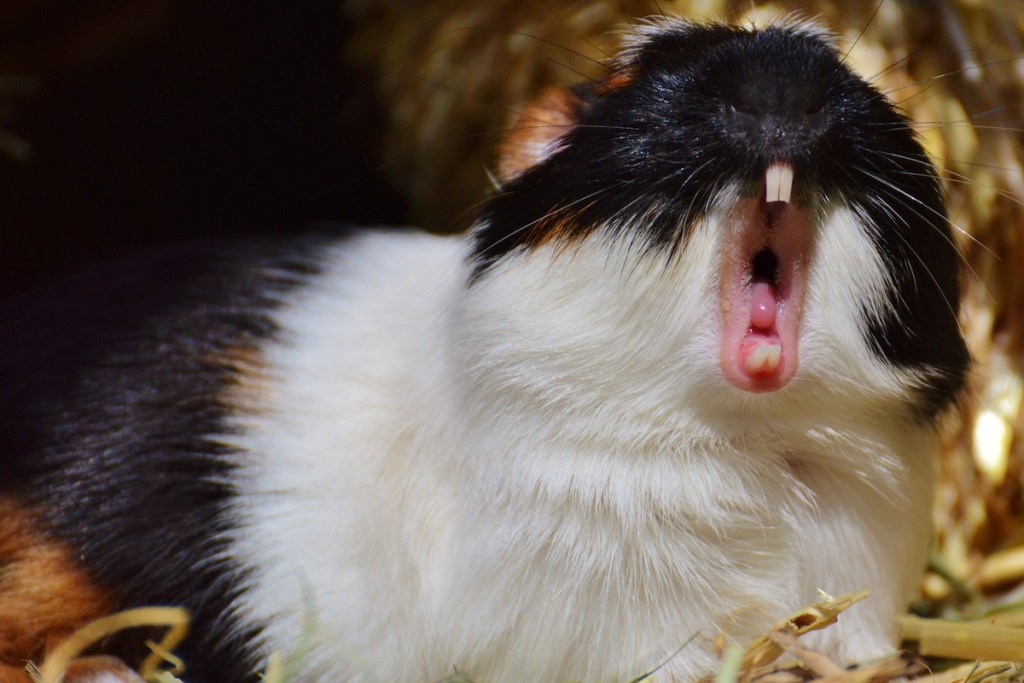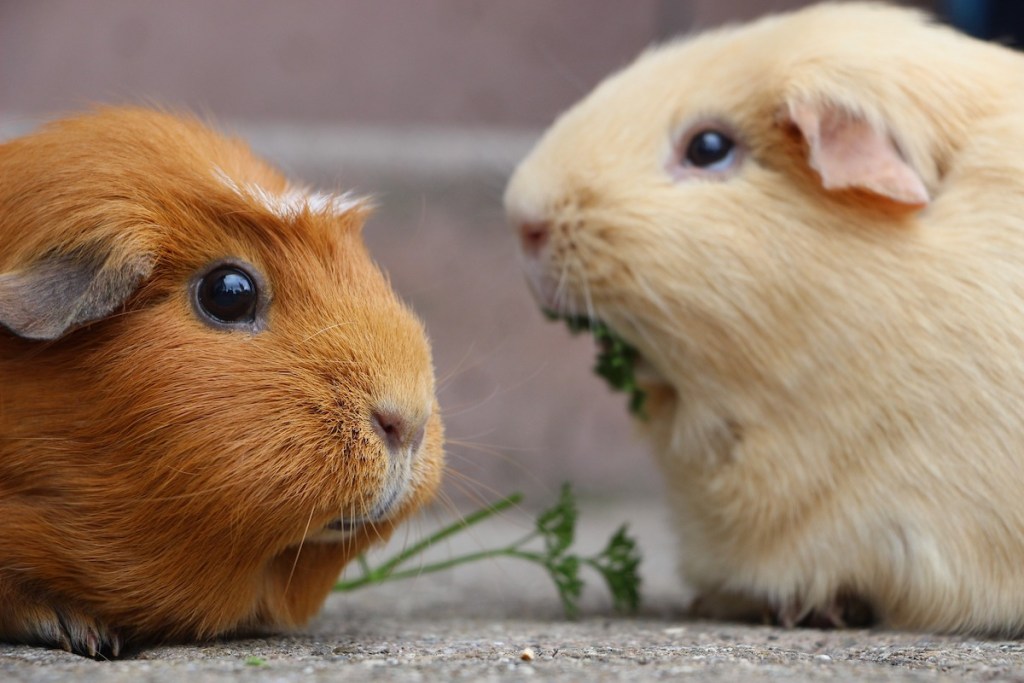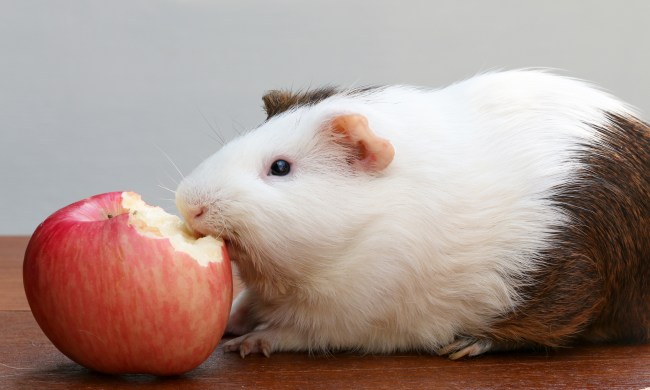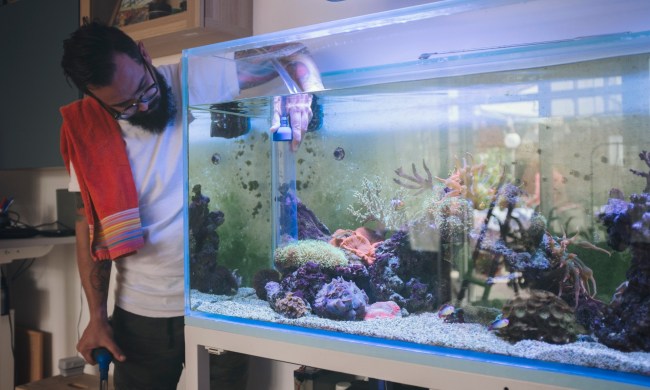Believe it or not, our animals communicate with us almost constantly (even if we don’t always understand). We may pick up on their barks, meows, chirps, and tweets after a while, but they also try to talk to us using body language. Your guinea pig will make a few noises that are worth learning, like his purr, whistle, and coo. However, you need to get used to his other methods of communication as well, which will often be his preferred ones. Take the time to learn his various behaviors — everything from the delightful popcorning to the warning signs, like biting (that one is pretty obvious). Use this guide to guinea pig body language to help you decipher your sweet new pet.

Popcorning
We’d like to start with the happiest, and cutest, of guinea pig postures. As the name suggests, your piggy will often resemble a piece of popcorn by bouncing up and down repeatedly. You probably already guessed that this means your pet feels overwhelming happiness and excitement. You’ll mostly see him do his joyful jump when he’s young and has newly joined your family, but it might happen later in life as well.
Backing away or freezing
Likewise, you can probably surmise that these movements typically indicate your critter’s nervousness or fear. When you first bring your new rodent home, it’ll take a while for both of you to get used to each other. During that time, you should tread carefully and let him come to you rather than picking him up when he’s frightened. Don’t make any sudden movements if you see him freeze as that will just startle him further.
Strutting and yawning
Well, this one’s tricky. It might look cute and funny, but shuffling side to side or showing his teeth actually means your guinea pig is going into fighting mode. Your animal won’t usually do this to you but likely to another guinea to assert his dominance. Watch out! This could mean a scuffle is on the way and you need to be aware.

Head tossing
Unfortunately, your little guy can’t tell you when to stop petting him, so he has to rely on you to pick up on his cues. Tossing his head back tells you to leave him alone for a bit, especially if he also fidgets out of your hand. Just give him a few minutes and offer your hand back rather than picking him up.
Scent marking or mounting
Just like your dog, your pet piggy will claim his territory either with urine or by rubbing his scent glands in strategic places. If he starts wiping his neck and chin against his cage or food bowl, you know he’s telling everyone that it belongs to him. Additionally, he could start mounting other pets, not necessarily of the opposite sex, but as a sign of dominance. Basically, this means “I’m in charge!”
Sniffing
Guinea pigs don’t have great eyesight, which is why they rely on their cute tufty ears and little button noses to discover the world around them. You may spot your animals sniffing each other along with their food and cage, particularly right after you’ve cleaned or a tank mate has used the litter.
Licking
It’s fun when our guinea pigs lick our hands, and they seem to like it too. While you should always carefully wash up after handling your pet, don’t worry too much about him tasting you now and then. It’s perfectly normal and he might do this to get at the delicious salts on your skin.
Trust your instincts
This list could look overwhelming to first-time small pet owners, but after just a few days or weeks of keeping your new pig, you’ll understand him and his movements completely. When in doubt, trust your instincts and look for the signs that you do recognize, things that are clearly meant to be aggressive or playful. It also takes a bit for our pets to warm up to us, and you’ll want to start very slowly and allow him to deal with only a few minutes of handling a day. Once he adjusts to you, make sure to spend time with him every day so he doesn’t forget that he likes it.



